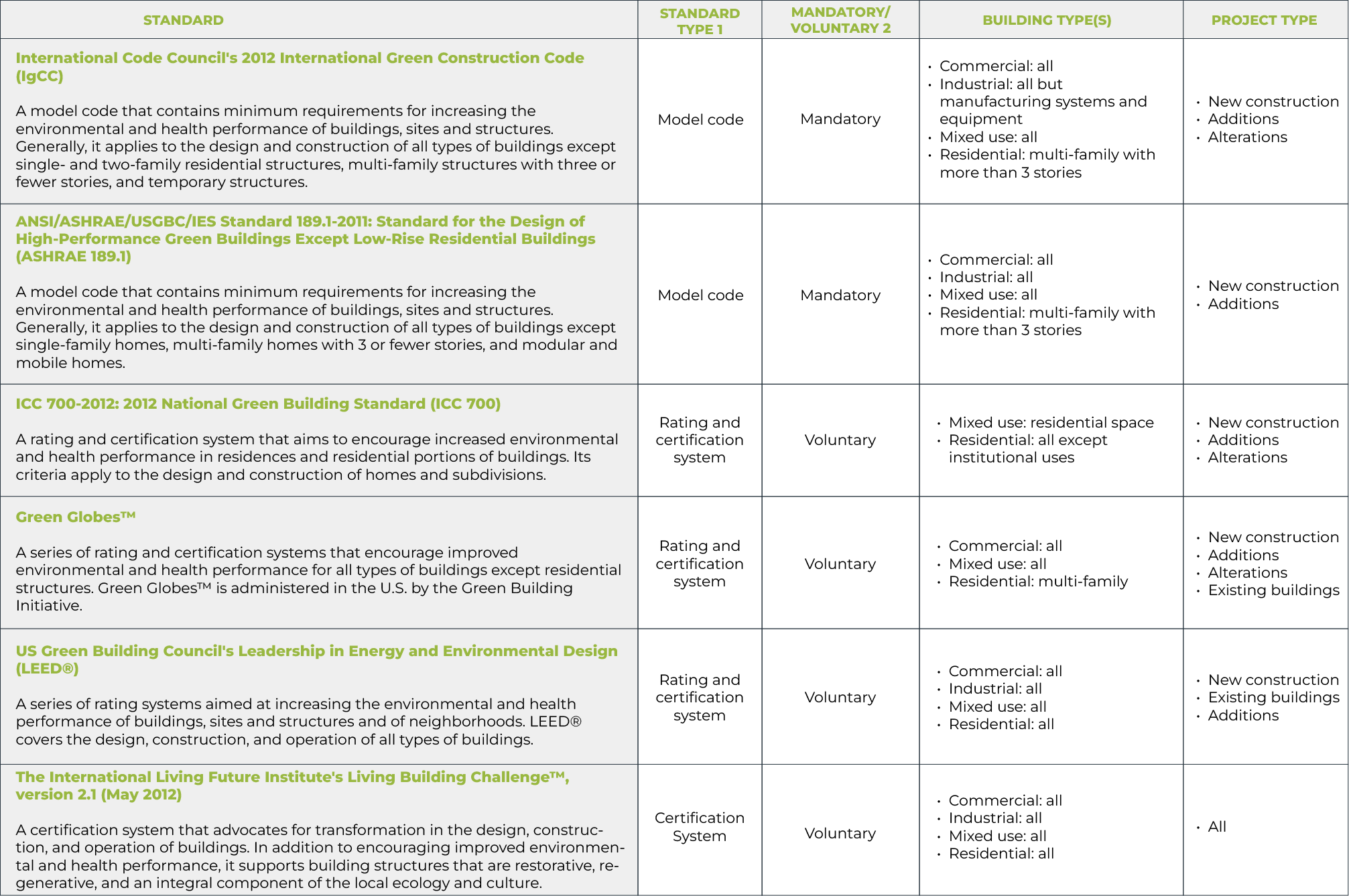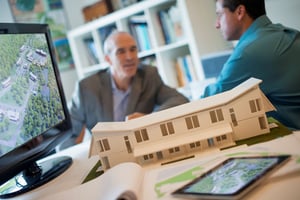As the world grapples with the challenges of climate change, sustainable practices have become increasingly important in various industries. One sector that has seen significant progress in embracing environmentally friendly practices is the construction industry, particularly through the implementation of green building standards. In the United States, green building has gained tremendous momentum, with numerous organizations and governing bodies working together to set and enforce these standards.
Importance of Green Building Practices in the US
Green building practices have become crucial in the United States due to their potential to reduce the environmental impact of residential and commercial structures. These practices encompass various aspects of construction, including energy efficiency, water conservation, waste reduction, and the use of sustainable materials. By adhering to green building standards, builders and developers can significantly decrease the carbon footprint of their projects, conserve natural resources, and create healthier living and working environments for occupants.
Green Building Standards and Governing Bodies in the US

To ensure the effective implementation of green building practices, the United States has established several governing bodies and organizations dedicated to setting and maintaining green building standards. The most prominent among these are the U.S. Green Building Council (USGBC), the International Code Council (ICC), and the Green Building Initiative (GBI). These organizations play a vital role in the development and enforcement of green building codes, certifications, and rating systems across the country.
Understanding the Default Standard for Green Building in the US
In the United States, the Leadership in Energy and Environmental Design (LEED) certification, developed by the USGBC, serves as the default standard for green building. LEED provides a comprehensive framework for evaluating a building's sustainability performance across various categories, such as energy efficiency, water efficiency, indoor environmental quality, and materials and resources. LEED-certified buildings are recognized for their exceptional environmental performance and are often rewarded with incentives, tax benefits, and public recognition.
Overview of Green Building Organizations in the US
Apart from the USGBC, several other organizations in the United States actively promote and support green building practices. These include the Green Building Initiative (GBI), which developed the Green Globes certification system, and the Living Building Challenge (LBC), which aims to create buildings that function as self-sufficient, regenerative systems. Each organization offers its own set of standards and certifications, providing builders and developers with a range of options to choose from based on their specific project requirements and sustainability goals.
Green Building Codes in Cities Across the US
The adoption of green building codes has gained significant momentum in cities across the United States. Currently, there are more than 500 cities with green building codes in place, each tailored to address the unique environmental challenges and goals of their respective regions. These codes cover a wide range of aspects, from energy efficiency and renewable energy use to waste management and sustainable design. By implementing green building codes, cities are not only reducing their carbon footprint but also creating healthier, more resilient communities.
Benefits of Adhering to Green Building Standards
Adhering to green building standards offers numerous benefits for builders, developers, and occupants alike. Firstly, it significantly reduces operating costs by improving energy and water efficiency. Green buildings also provide healthier indoor environments, leading to increased productivity and improved overall well-being for occupants. Additionally, green building practices contribute to the reduction of greenhouse gas emissions, helping combat climate change. Furthermore, green buildings often enjoy higher property values, lower maintenance costs, and increased market demand, making them a wise investment choice.
Challenges Faced in Implementing Green Building Practices in the US
While the adoption of green building practices has accelerated in the United States, it is not without its challenges. One significant hurdle is the initial cost of incorporating sustainable features into construction projects. However, it's important to note that these costs are often offset by long-term savings on energy bills and operational expenses. Additionally, the lack of awareness and education about green building practices among stakeholders can hinder widespread adoption. Collaborative efforts between industry professionals, policymakers, and the public are essential to address these challenges and promote sustainable construction practices.
Green Building Certification and Rating Systems in the US
Green building certification and rating systems play a crucial role in verifying and recognizing the environmental performance of buildings. In addition to LEED and Green Globes, other notable certification programs in the United States include the WELL Building Standard, which focuses on optimizing occupant health and well-being, and the ENERGY STAR certification, which identifies energy-efficient buildings. Each certification program evaluates different aspects of sustainability, enabling builders and developers to choose the most suitable option based on their project goals.
The Bottom Line
As sustainable practices continue to gain traction, navigating the landscape of green building standards in the United States becomes increasingly important. By understanding the importance of green building practices, the role of governing bodies, and the benefits and challenges associated with implementation, builders and developers can make informed decisions that contribute to a more sustainable future. With a wide range of green building organizations, codes, and certifications available, the United States is well-positioned to lead the way in creating environmentally responsible buildings that prioritize the well-being of occupants and the planet. View our construction sector services.
GET IN TOUCH WITH US TODAY
We can help you get your business on the right path to reaching net zero.



